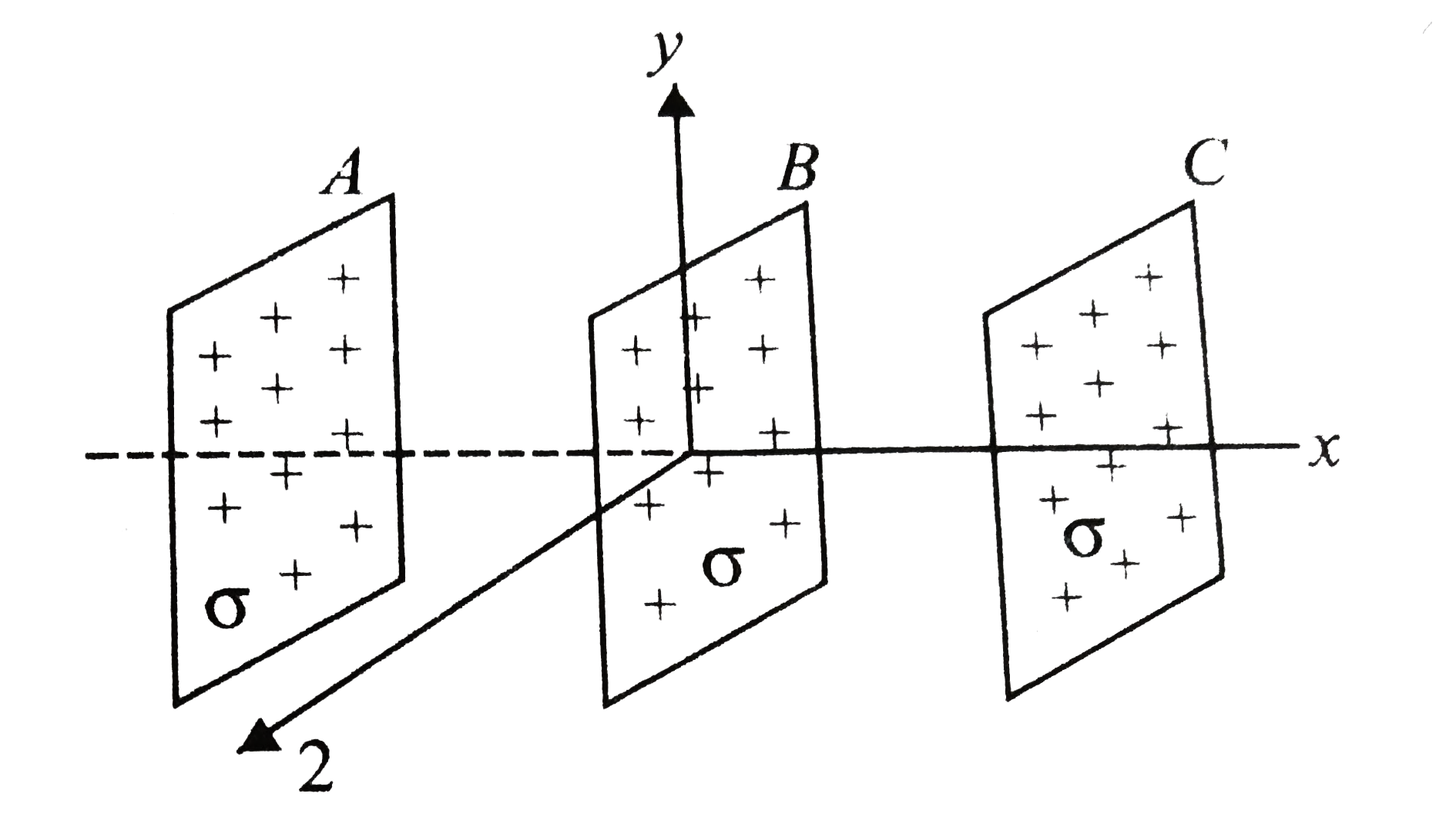Two uniformly charged, infinite, nonconducting planes are parallel to a yz plane and positioned at x=−50cmandx=+50 cm. The charge densities on the planes are −50nC/m2and+25nC/m2, respectively. What is the magnitude of the potential difference between the origin and the point on the x axis at x=+100cm ?
(Hint: Use Gauss' law.)
2.8×103V
Topper's Solved these Questions
- BOOK - RESNICK AND HALLIDAYCHAPTER - ELECTRIC POTENTIALEXERCISE - (PRACTICE QUESTIONS) Single Correct Choice Type21videos
ELECTRIC POTENTIAL
- BOOK - RESNICK AND HALLIDAYCHAPTER - ELECTRIC POTENTIALEXERCISE - (PRACTICE QUESTIONS) More than One Correct Choice Type8videos
ELECTRIC POTENTIAL
- BOOK - RESNICK AND HALLIDAYCHAPTER - ELECTRIC POTENTIALEXERCISE - CHECKPOINT6videos
ELECTRIC POTENTIAL
- BOOK - RESNICK AND HALLIDAYCHAPTER - ELECTRIC CHARGES AND FIELDSEXERCISE - Practice Questions (Integer Type )3videos
ELECTRIC CHARGES AND FIELDS
- BOOK - RESNICK AND HALLIDAYCHAPTER - ELECTROMAGNETIC INDUCTIONEXERCISE - PRACTICE QUESTIONS (Integer Type)14videos
ELECTROMAGNETIC INDUCTION
Similar Questions
A solid conducting sphere ofradius 5.0 cm has a charge of 0.25nC distributed uniformly on its surface. If point A is located at the centre of the sphere and a point Bis 15cm from the center, what is the magnitude of the electric potential difference between these two points ?
View SolutionOptic axis of a thin equiconvex lens is the x-axis. The co-rodinates of a point object and its image axis (−40cm,1cm) and (50cm,−2cm) respectively. Lens is located at
View Solution
Knowledge Check
- Question 1 - Select One
Electric field at a distance x from the origin is given as E=100N−m2/Cx2 . Then potential difference between the points situated at x = 10 m and x = 20m is :-
A5 VB10 VC15 VD4V - Question 2 - Select One
Optic axis of a thin equiconvex lens is the x-axis. The co-rodinates of a point object and its image axis (−40cm,1cm) and (50cm,−2cm) respectively. Lens is located at
Ax=+20cmBx=−30cmCx=−10cmDorigin - Question 3 - Select One
Optic axis of a thin equi-convex lens is the x-axis. The co-ordinates of a point object and its image are (−40cm,1cm)and(50cm,−2cm), respectively. Lens is located at
Ax=20cmBx=−30cmCx=−10cmDorigin
Optic axis of a thin equi-convex lens is the x-axis. The co-ordinates of a point object and its image are (−40cm,1cm)and(50cm,−2cm), respectively. Lens is located at
View SolutionTwo Charges 5 μC and 20 μC are placed on two concentric circes of radius 10 cm and 20 cm respectively lying in x-y plane . The potential at centre is
View SolutionThree infinite planes have a uniform surface charge distribution σ on its surfaces. All charges are fixed. On each of the three infinite planes, parallel to the yz plane placed at x=−a,x=0,andx=a, there is a uniform surface charge of the same density, σ. The potential difference between A and C is
 View Solution
View SolutionTwo Charges 5 μC and 20 μC are placed on two concentric circes of radius 10 cm and 20 cm respectively lying in x-y plane . The potential at centre is
View SolutionThree infinite planes have a uniform surface charge distribution σ on its surfaces. All charges are fixed. On each of the three infinite planes, parallel to the yz plane placed at x=−a,x=0,andx=a, there is a uniform surface charge of the same density, σ. The potential difference between A and C is
 View Solution
View Solution

